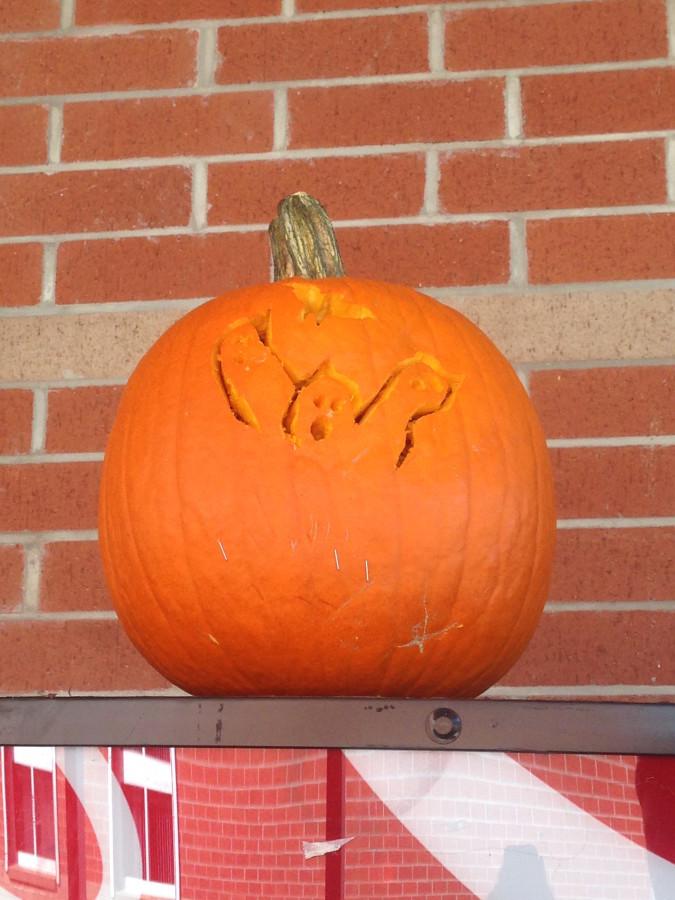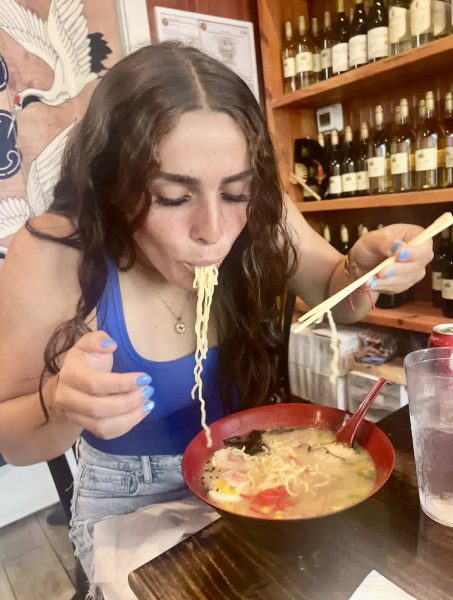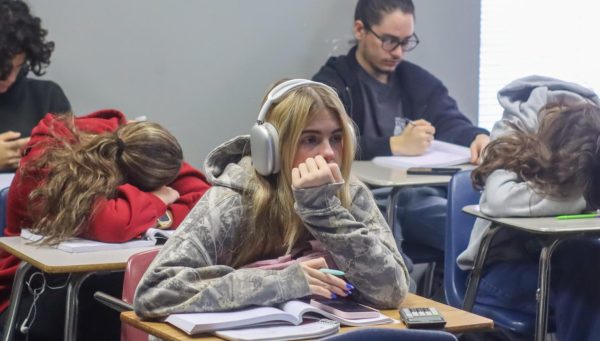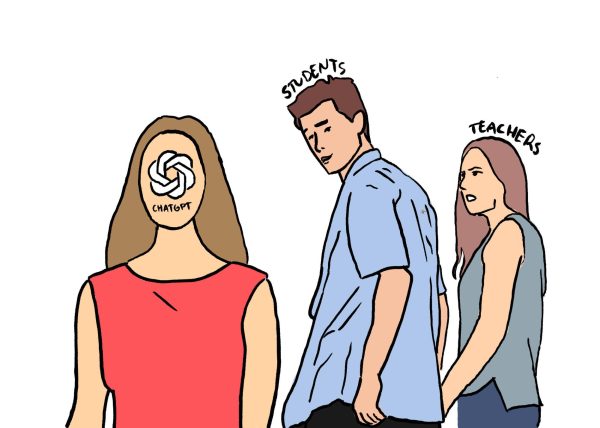Thompson spices up culinary curriculum
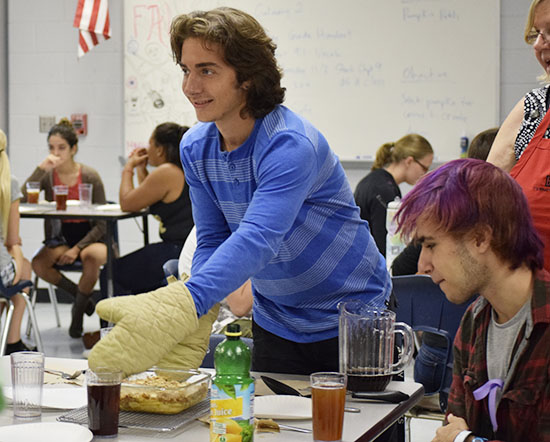
Junior Trey Hogan takes a freshly baked apple crisp to his table to serve his peers.
Biscuits, chocolate chip cookies, pancakes: Last year, students in the culinary program cooked three dishes in 36 weeks. By Nov. 1, this year’s students have already cooked 10 dishes, from spaghetti to soup. As a result of new instructor Matthew Thompson, culinary is undergoing a makeover and cooking up more fun.
Replacing Janice Palmer after her retirement last year, Thompson never intended on being a culinary teacher. Majoring in journalism at UCF, he spent 15 years working in the professional worlds of both journalism and hospitality.
“If you asked me 20 years ago, I would’ve expected myself to be working for the Wall Street Journal at this point,” Thompson said.
Thompson was always interested in teaching, but he did not see how the salary could support his family. He recently left the hospitality industry and began working as a substitute teacher. When Palmer retired, the school offered him a temporary job for the fourth quarter, and because he was seen as a good fit, the school offered him a permanent position teaching culinary classes this year.
“I knew it was time to start teaching when I was miserable with my other job,” Thompson said. “[ I’m ] driving home with a smile on my face; This is the best job I could’ve asked for.”
Because of his professional experience in the industry, Thompson has introduced multiple changes from curriculum to classroom design.
In restaurants, atmosphere is key to the experience, and in the culinary lab the same holds true. Ditching the widespread gray color scheme of the older culinary lab, the new room incorporates decorative dishes, vases and seasonal decorations like pumpkins. The previous lab used multiple rows of desks throughout the center, which was renovated to feature dining tables instead. Warm colored decorative lamps add to the welcoming atmosphere.
Not only has the classroom undergone a makeover, but Thompson has used his professional experiences to sharpen the relevancy of the course. In the past, students were lucky to cook three times a year, but students in the renovated course are in the lab cooking weekly.
“I am also trying to incorporate more creative cooking,” Thompson said. “Yes, we will make basics such as pancakes and pasta, but I want to incorporate holidays into the mix. This year we will work on making a Thanksgiving dinner.”
To get into the holiday spirit, students carved pumpkins from the varsity boys soccer pumpkin patch. After the pumpkins were carved, students hit the lab to prepare and cook the leftover seeds.
“In Culinary II, sometimes we would go months without cooking,” junior Kaitlyn Gross said. “This year we’ve already made more advanced meals like pasta with homemade sauce and chicken stir-fry.”
With all of the food cooked in the classroom, leftovers are not an uncommon sight. The culinary class places a menu outside the room whenever they work in the lab, and teachers and staff often swing by for a taste.
“If you’re ever walking through the school and smell some delicious food, I guarantee you that’s us.” Thompson said. “I’ve been able to smell our cooking all the way at the front office. It’s a sure sign that the culinary lab is up and running.”
Because of the frequency of cooking, students and parents have to contribute. Cooking weekly, the culinary program relies on donations to continue running, however students gladly participate when they see the donations put to use.
“In the past, students would make donations and wind up only cooking a few times throughout the course,” Thompson said. “Now students are happy to contribute when they can see exactly where their donations are going.”
Pumpkin Perfection
Along with food preparation, students have one day of book work and one day of testing per week to increase their knowledge of kitchen tools and techniques for both cleaning and cooking. Students are exposed to all aspects of cooking; However, they have extensive time in the culinary lab producing dishes and gaining valuable experience.
“When students signed up for the course, they assumed they would be cooking,” Thompson said. “Now the expectation is becoming a reality and the response is great.”
Another change to the program has been increased freedom and trust between teacher and student.
“In real life, you aren’t going to have someone hand you all of the right measurements for your dish, you are going to have to figure it out on your own,” Thompson said.
Students this year have open access to their ingredients and, in some instances, cook based on their own recipes. Students are also given more freedom to rely on their skills, not solely the teacher’s direction.
According to Thompson, this relaxed approach has been working smoothly, and there has not been a discipline issue. The reconstruction of the culinary courses is likely to create more interest in students, despite a decline of students in the past.
Typically, only about half of the Culinary I classes continue into Culinary II. This year, Culinary III and Culinary IV are a combined class, as Culinary IV only had four students enrolled.
Regardless of the previous lack of follow-through, Thompson expects to see a huge boost in student interest in the following years.
“Students are getting super excited when they find out about all of the changes,” Thompson said. “I hear kids not even enrolled in the course raving about it after listening to their friends or seeing posts on social media of everyone cooking.”
Already teaching seven periods of culinary, Thompson is expecting to see a peak in enrollment as word travels through campus and the newly redesigned course continues to turn heads.
Your donation will support the student journalists of Hagerty High School. Your contribution helps us publish six issues of the BluePrint and cover our annual website hosting costs. Thank you so much!

